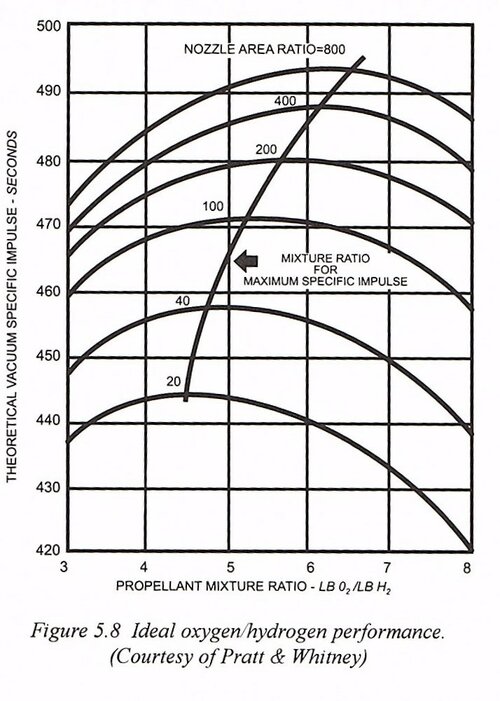What are the benefits of a RDE relative to a conventionel rocket? Sure, you can use a lower pressure for the fuel pumps and the thermal load in the combustion "area" is lower than in a conventional combustion chamber with constant temperatures and pressue, but other than that, I don't see were it can be more efficient.
In a conventional rocket, the fuel/air ratio can be choosen freely, if a leaner mixture would be desirable, rockets would run leaner.
I do see the point, that it works self compressing with reduced effort in pumping the fuel and oxygen, this is the only part were I see greater simplicity.
Exactly, Nick.
There is a lot of nonsense about RDRE on the internet, on youtube, and even in "scientific" articles. If they don't mention laws of thermodynamics then one can ignore it.
Max Isp is achieved for a
stoichiometric mixture. Lean or rich will both
reduce achievable Isp.
Excess of either oxidiser or fuel
reduces achievable Isp as excess acts as an energy sink.
In another topic I already wrote about RDRE: "
The maximum possible Isp of a rocket engine is limited by the First Law: the sum of Enthalpy (function of temperature) and Kinetic Energy (function of velocity) can never exceed the energy content (Enthalpy plus Lower Heating Value) of the propellants, but the authors of the article don't seem to realize that. Thermodynamic laws don't play any role in their article. Often enough scientist forget the First Law when they are working on a new invention. Fixated on the interesting physics of their theory they don't think about doing a simple check of all energy in and out."
To put it simpler: one can never get more from the exhaust of a rocket engine than what was put in by the propellants, irrelevant what kind of rocket engine it is. That applies to Mass flow as well as Energy flow.
The objective in designing a rocket engine is to achieve an as low as possible exhaust Enthalpy (low exhaust temperature) thereby maximising exhaust Kinetic Energy (maximising exhaust velocity and consequently Isp).
The lower the exhaust temperature the higher the Isp will be.
Rotating detonation is irrelevant for that. It does not affect the total Energy Content of the exhaust because that is determined only by the total Energy Content of the propellants. Fancy gadgets located between propellant inlets and exhaust outlet have no impact on the overall Energy balance of the rocket engine.
RD can only give a worthwhile efficiency benefit for turbofans.
For rocket engines, (sc)ramjets and turbojets it may provide a weight and/or cost benefit, but that's it.




